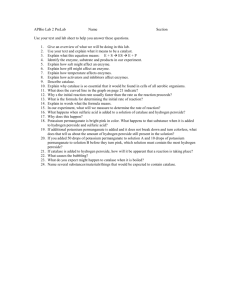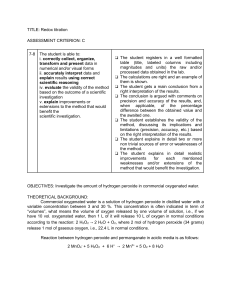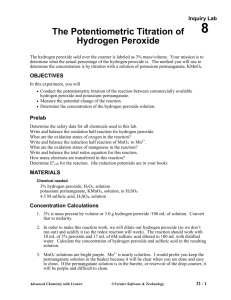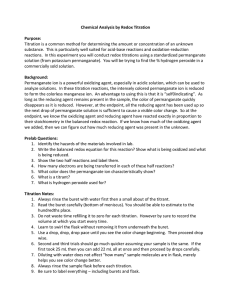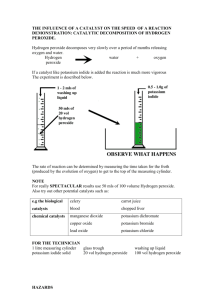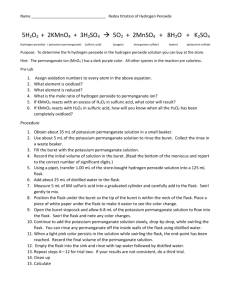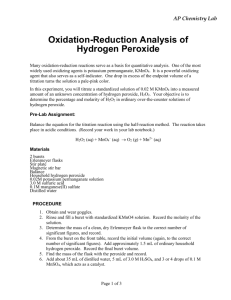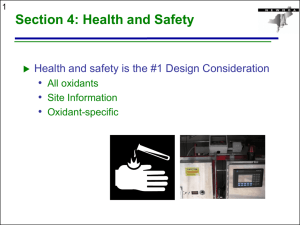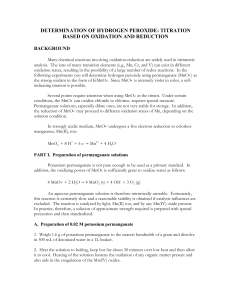Redox Titration Laboratory
advertisement
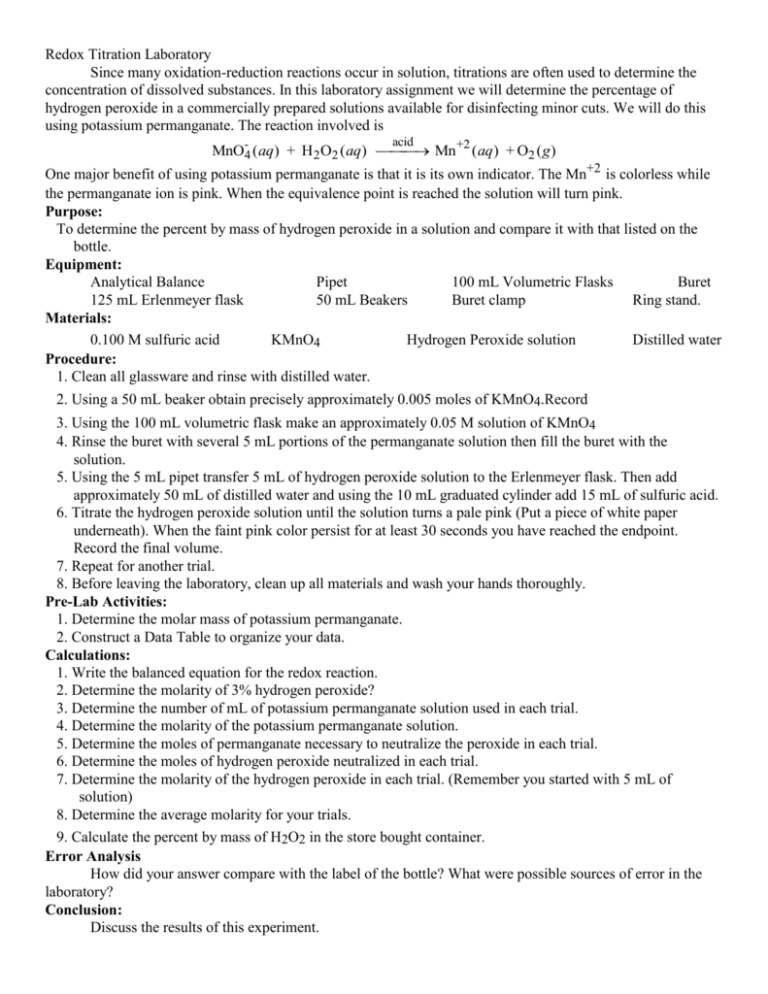
Redox Titration Laboratory Since many oxidation-reduction reactions occur in solution, titrations are often used to determine the concentration of dissolved substances. In this laboratory assignment we will determine the percentage of hydrogen peroxide in a commercially prepared solutions available for disinfecting minor cuts. We will do this using potassium permanganate. The reaction involved is acid MnO-4 ( aq) + H 2 O2 ( aq) Mn +2 ( aq) + O2 ( g ) One major benefit of using potassium permanganate is that it is its own indicator. The Mn+2 is colorless while the permanganate ion is pink. When the equivalence point is reached the solution will turn pink. Purpose: To determine the percent by mass of hydrogen peroxide in a solution and compare it with that listed on the bottle. Equipment: Analytical Balance Pipet 100 mL Volumetric Flasks Buret 125 mL Erlenmeyer flask 50 mL Beakers Buret clamp Ring stand. Materials: 0.100 M sulfuric acid KMnO4 Hydrogen Peroxide solution Distilled water Procedure: 1. Clean all glassware and rinse with distilled water. 2. Using a 50 mL beaker obtain precisely approximately 0.005 moles of KMnO4.Record 3. Using the 100 mL volumetric flask make an approximately 0.05 M solution of KMnO4 4. Rinse the buret with several 5 mL portions of the permanganate solution then fill the buret with the solution. 5. Using the 5 mL pipet transfer 5 mL of hydrogen peroxide solution to the Erlenmeyer flask. Then add approximately 50 mL of distilled water and using the 10 mL graduated cylinder add 15 mL of sulfuric acid. 6. Titrate the hydrogen peroxide solution until the solution turns a pale pink (Put a piece of white paper underneath). When the faint pink color persist for at least 30 seconds you have reached the endpoint. Record the final volume. 7. Repeat for another trial. 8. Before leaving the laboratory, clean up all materials and wash your hands thoroughly. Pre-Lab Activities: 1. Determine the molar mass of potassium permanganate. 2. Construct a Data Table to organize your data. Calculations: 1. Write the balanced equation for the redox reaction. 2. Determine the molarity of 3% hydrogen peroxide? 3. Determine the number of mL of potassium permanganate solution used in each trial. 4. Determine the molarity of the potassium permanganate solution. 5. Determine the moles of permanganate necessary to neutralize the peroxide in each trial. 6. Determine the moles of hydrogen peroxide neutralized in each trial. 7. Determine the molarity of the hydrogen peroxide in each trial. (Remember you started with 5 mL of solution) 8. Determine the average molarity for your trials. 9. Calculate the percent by mass of H2O2 in the store bought container. Error Analysis How did your answer compare with the label of the bottle? What were possible sources of error in the laboratory? Conclusion: Discuss the results of this experiment.

